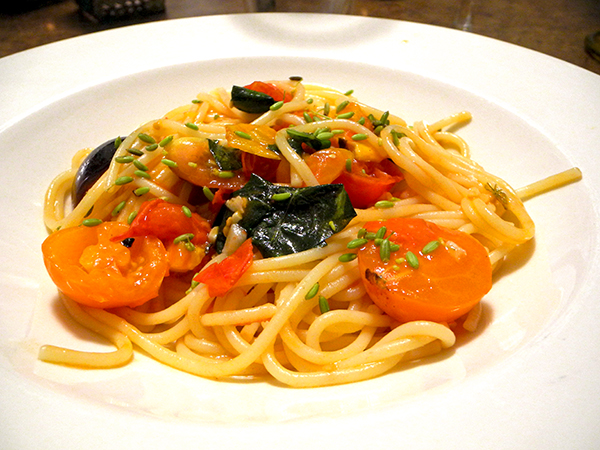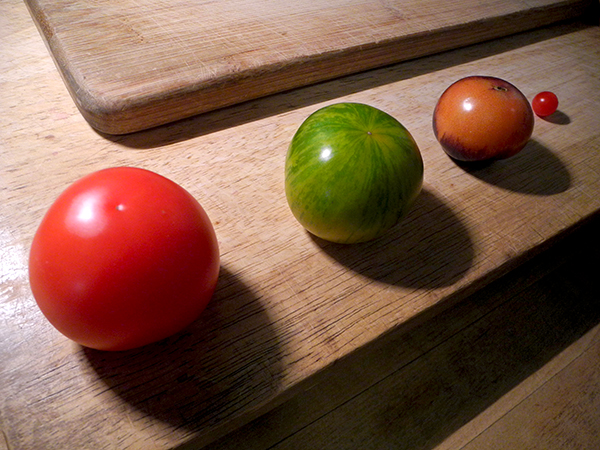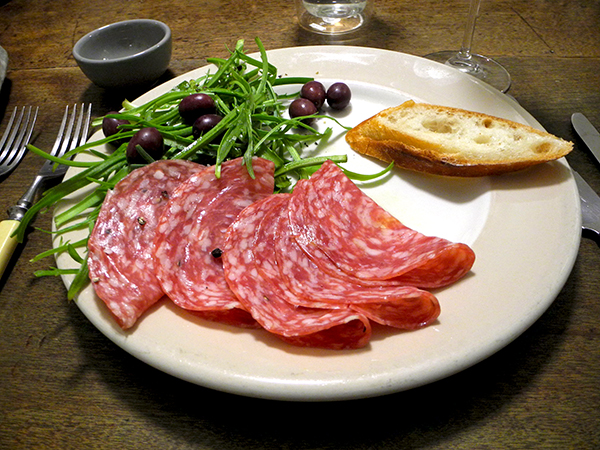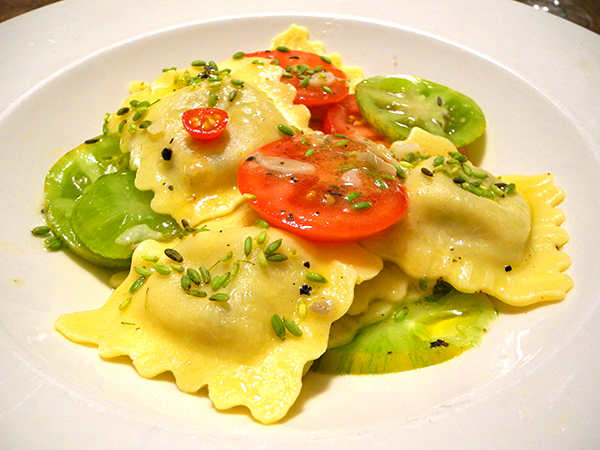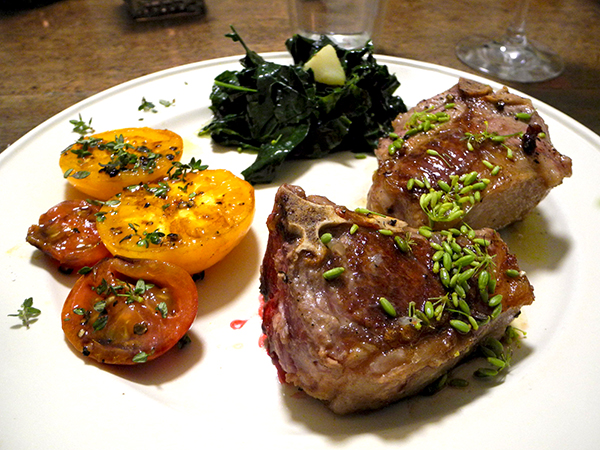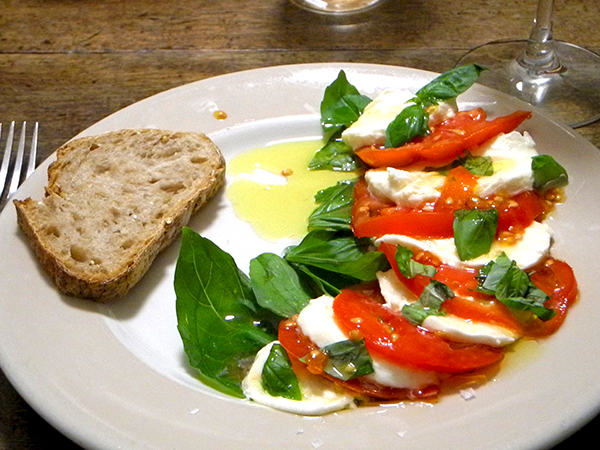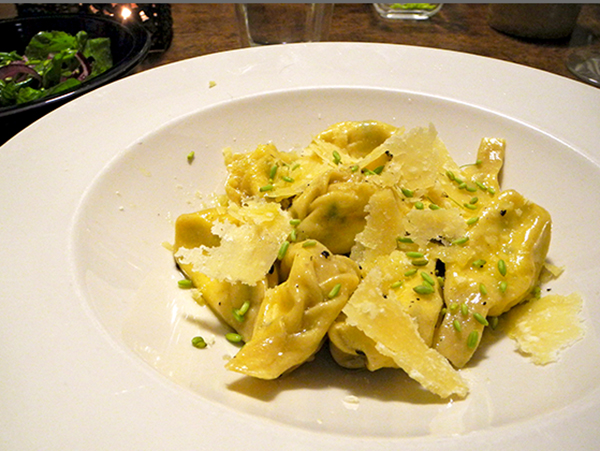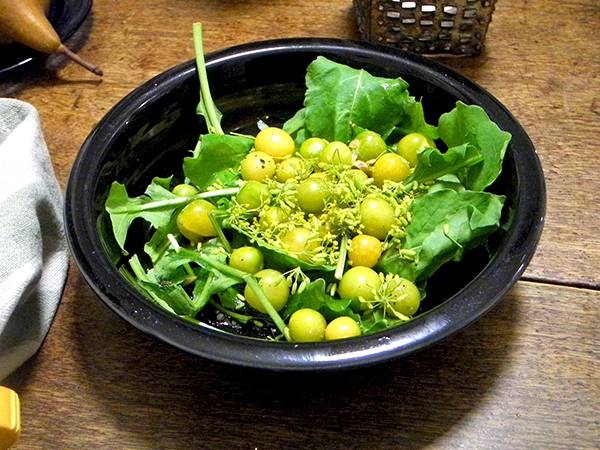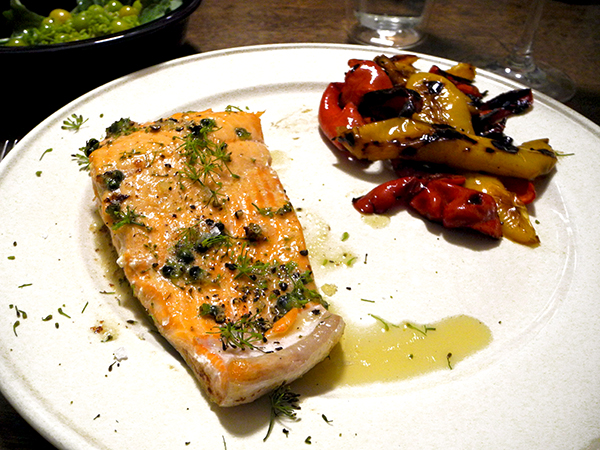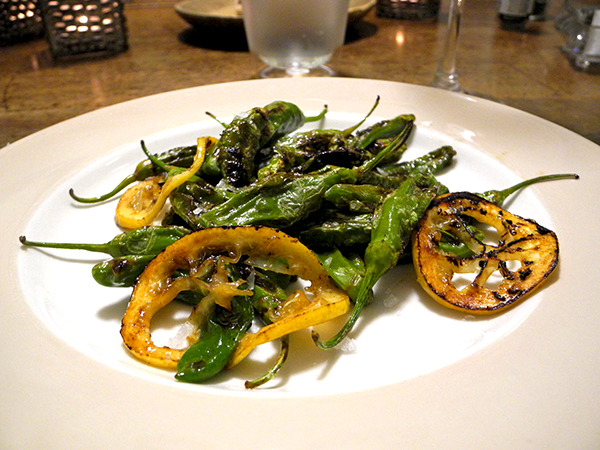
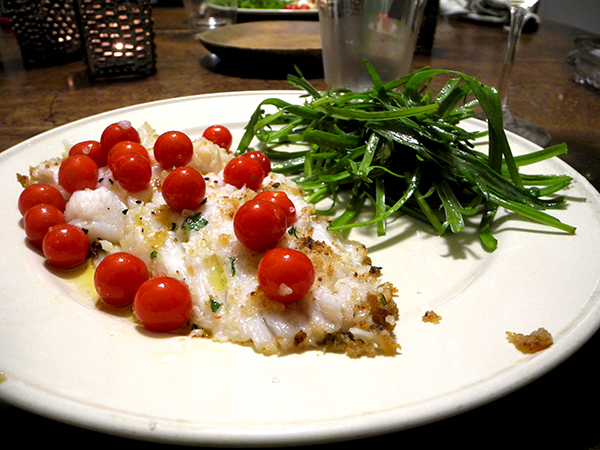
In preparing of each of the elements of this meal I departed a bit from my usual treatment, but not always intentionally.
- I prepared the peppers, small shishito from Lani’s Farm just a little more elaborately than usual, but there’s not a lot to be gained in repeating the same formula over and over again, at least when it comes to cookery; I added thin slices of lemon towards the end of the peppers’ time blistering in the pan, and served them on the table with a choice of three salts (two of them flavored) plain, classic Maldon, smoked alderwood from The Filling Station, and ‘Sel Magique‘ (I had forgotten that I also had my own lemon-caper salt sitting in the cupboard as well)
- the wine was a California white, Hanging Vine Chardonnay Parcel 4 Lodi 2014
The main course would already have been a variation on a classic Thomas Keller recipe, but I altered it even further, in this case inadvertently. This is how my own version of the recipe for the cod was supposed to go:
two cod fillets from P.E. & D.D. Seafood, brought to room temperature and seasoned with salt on both sides, the top of each piece brushed with a little real dijon mustard mixed with a very little water, that side then dipped in a mixture of homemade breadcrumbs and finely-chopped parsley from Keith’s Farm, browned briefly, breadcrumb side down, in a heavy enameled cast iron pan with olive oil, transferred to a 325º oven and cooked until the fish begins to flake, near the end of the cooking adding tiny ‘Mexico Midget’ vine tomatoes from Berried Treasures, arranging them on the cod after it was filleted
But, probably because I was tired, and a little distracted, I forgot to bread the two fillets, so, as soon as I had had put them into the pan, I removed them and dipped them in the breadcrumb mixture I had placed in a bowl on the counter, and then, in returning them to the pan, I neglected to return them with the breaded sides down; finally, I almost forgot to toss the tomatoes into the pan before the cod was finished cooking.
I was surprised that everything turned out okay, and in the end the fish didn’t even look messy. More importantly, it was delicious, probably meaning it was a good recipe – and surely a keeper.
- As for the minutina, from Norwich Meadows Farm, this was the first time I had served it totally raw, as a salad, which is the way I think virtually everyone does serve it. I’ve decided it will probably be the last time: Although it may be tricky to get this delicious green to the perfect wilt, without seeing it virtually disappear in the pan, I think it’s worth the effort, for the contribution it makes both to taming the roughage and improving the flavor
- the wine with the fish was an Italian (Umbria) white, Orvieto
- the music was several of Haydn’s divertimenti
